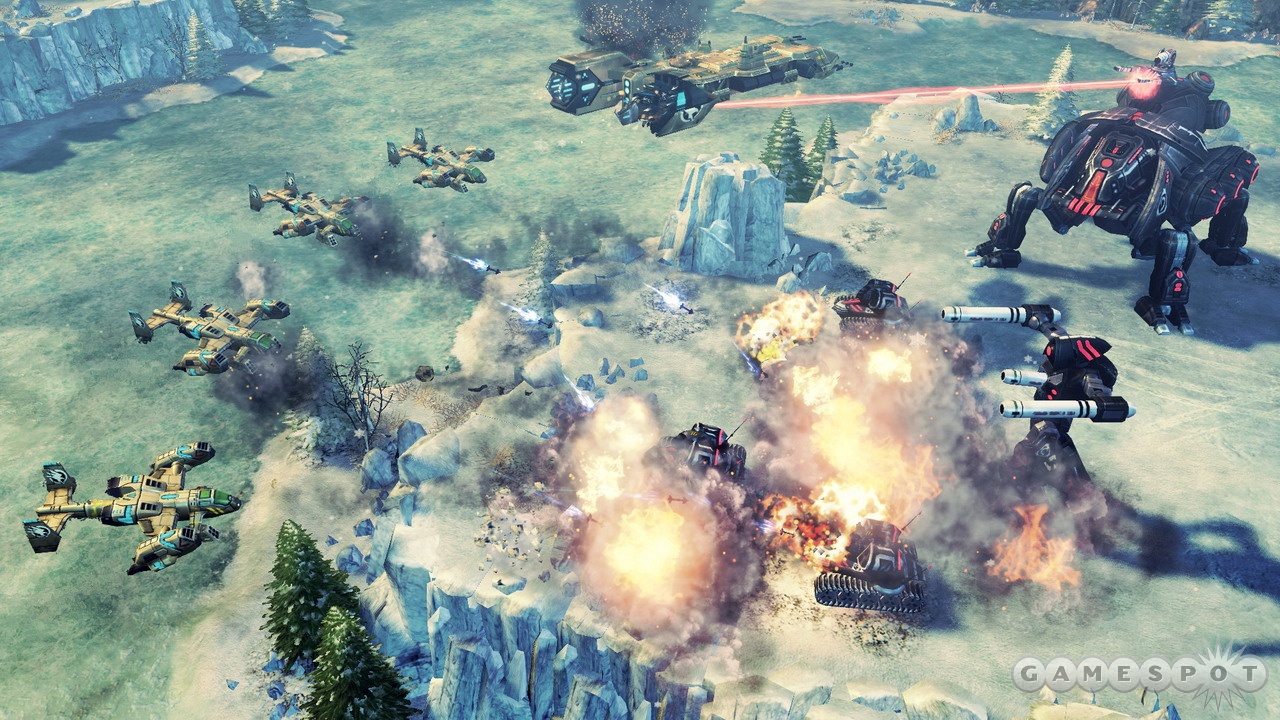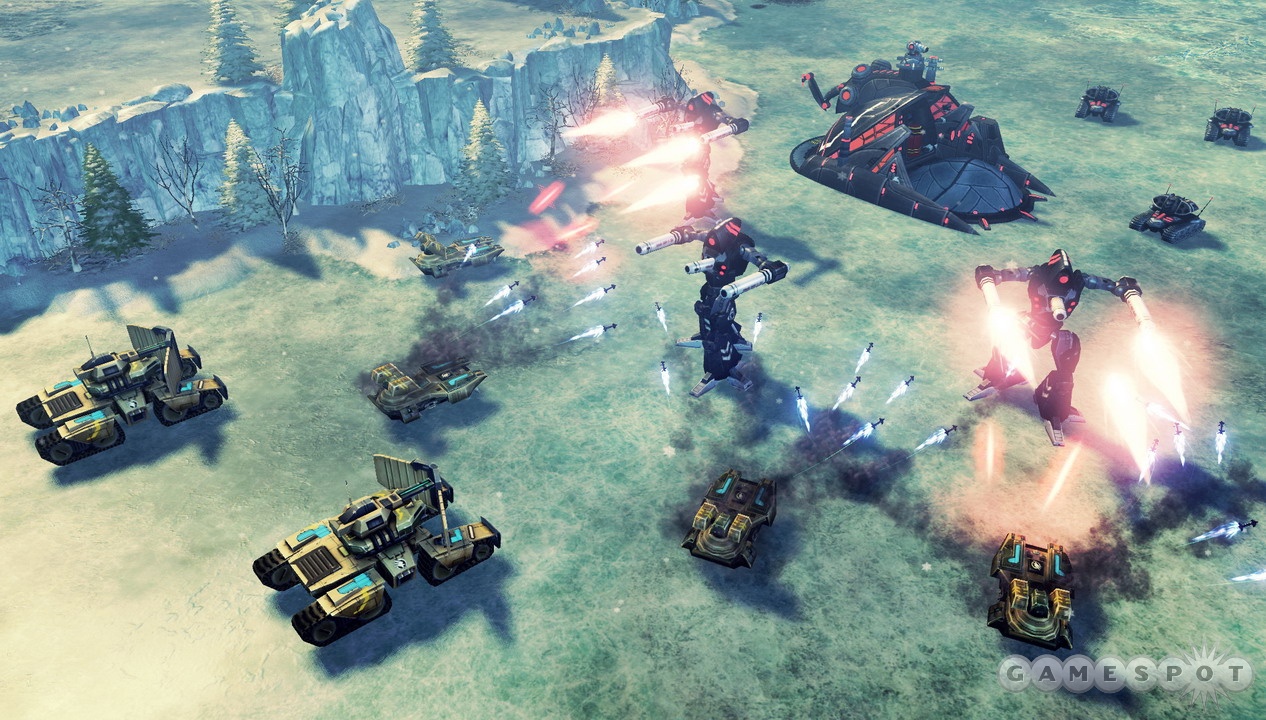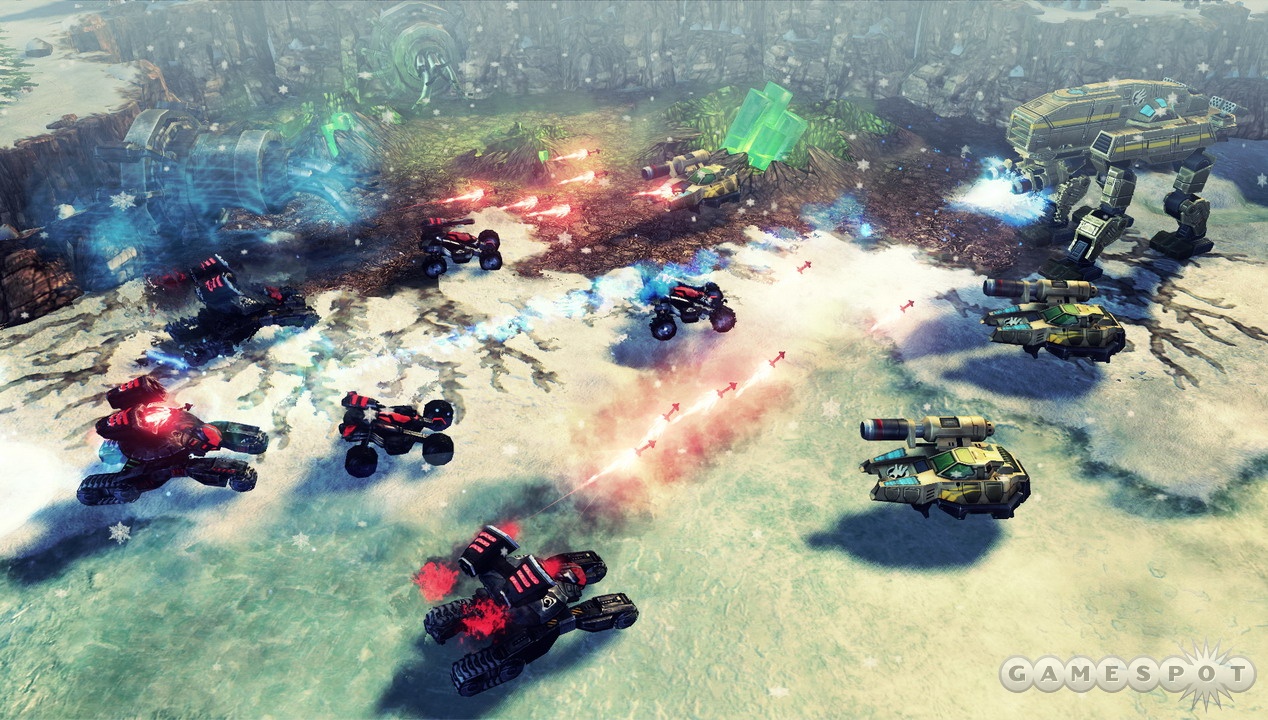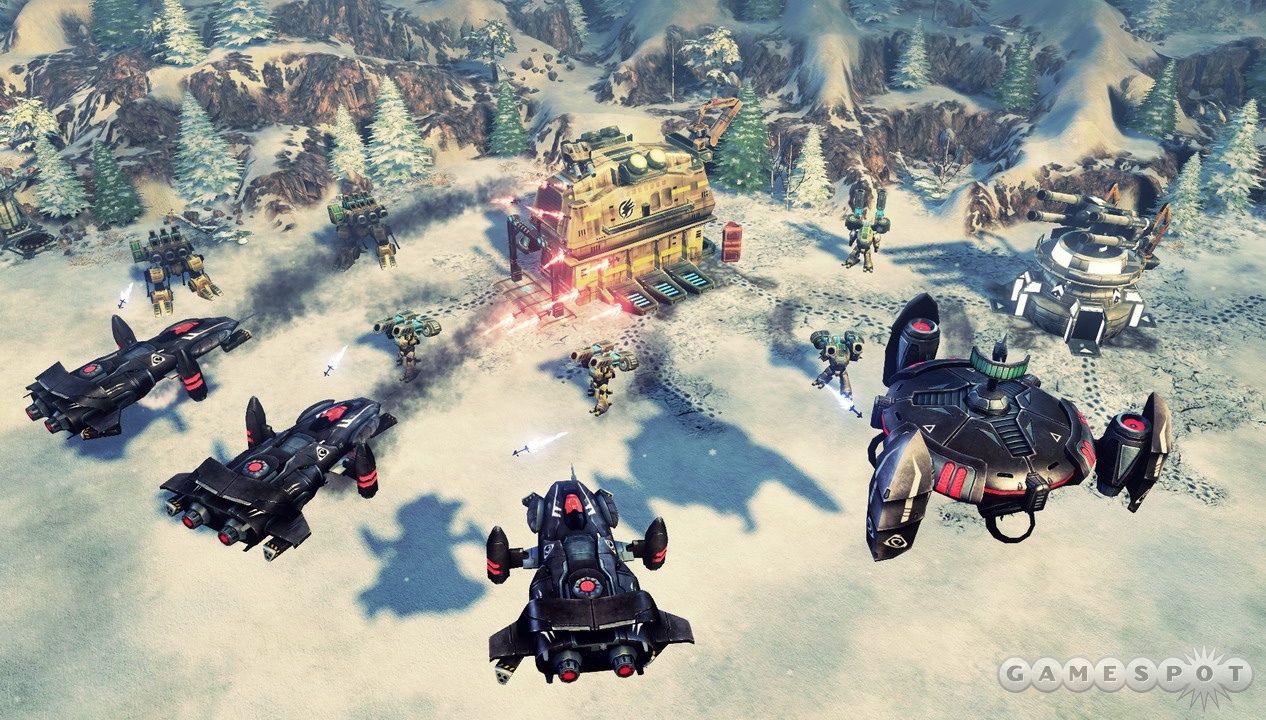Command & Conquer 4 Updated Hands-On - Multiplayer for Ten People
Five-on-five multiplayer is real in Command & Conquer 4. And we played it.
We recently had a chance to try out the five-on-five competitive multiplayer in the upcoming Command & Conquer 4: Tiberian Twilight and found the experience to be surprisingly fast-paced and fluid, despite having a whopping 10 active players at once.

As you may recall from our previous coverage, Command & Conquer 4 will reprise the conflict between the "good guy" GDI faction and the "bad guy" Brotherhood of Nod faction, and these are the two primary factions that will appear in multiplayer. C&C4's multiplayer will feature a conquest-like mode reminiscent of World in Conflict or the Battlefield first-person shooter series with numerous control points on the map that must be captured and held to attain points. These include standard spawn points as well as neutral turrets that can be commandeered as static defenses.
You can also earn points by destroying enemy units and by capturing Tiberium shards, which regularly appear at a few key drop points on the map--these shards can be "harvested" by any unit by clicking on them to attach them to your unit, then directing your unit back to your nearest captured spawn point. By pulling in enough shards, your team will eventually be able to unlock tier-two and tier-three upgrades for all of your team members. The event of unlocking new units is obviously great news for your team but will require you to be nimble about your unit mix. The matches we played had a fairly tight "command points" (population) cap of 50 (this doesn't specifically mean "50 units," since some units take up three command points and others take up seven), so we noted that unless you're playing with higher population caps, you'll also need to be able to dynamically modify your armies each time you "tech up." Fortunately, you can immediately remove any unit you've built by selecting it and pressing the Delete key on your keyboard, which immediately reclaims the command points--but you're still going to be best served thinking a unit or two ahead to keep in mind which higher-tier units you'd bring in next. As it turns out, if you're defeated in battle, you can also respawn mid-match as a different playable "class" than the one you started with.
In both the single- and multiplayer modes, you'll be able to choose one of three different playable classes. Each has totally different units and plays a different role on the battlefield. The offense class, which we've seen and played before, focuses heavily on tanks and powerful ground vehicles, while the defense class focuses instead on heavy-duty defensive turrets. Both of these classes have many ground units capable of capturing control points, which include spawn points and static turrets that can be commandeered by massing ground units nearby to eventually "flip" them over to your team's side. The support class, on the other hand, focuses primarily on air units, which can't capture points on the map but can cover huge amounts of ground quickly and soften up control point defenses to be swept away by ground reinforcements. Since we've already tried out the GDI offense class, we chose to play as the GDI defense and support classes, as well as the Nod support class, in our play sessions.

The GDI defense class has a good variety of infantry and small vehicles (including troop transports) but seems most useful in a team match when hunkered down next to a control point with some heavy-duty turrets. Yes, the faction has cheap grunt infantry like Zone Troopers and Zone Lancers, and vehicles like the handy Armadillo troop transport, which shelters your foot soldiers, but the name of the game for defense seems to be deploying your mobile crawler base and any and all defensive units and structures around hotspots to weather the storm of enemy encroachments. In fact, two vehicles can actually be deployed as stationary defenses: the Rhino sonic tank, which damages nearby enemies with sonic waves when deployed, and the Spartan tank, which can effectively be used as a turret.
In addition, GDI defense has numerous actual stationary turrets that it can create within the build radius of a deployed crawler base, including midlevel MLRS rocket launcher turrets and the top-flight ion cannon--a slow-to-build, slow-to-recharge emplacement that can call in an orbital strike to rain down heavy damage in a decent-sized radius large enough to enclose an enemy base and a handful of vehicles. Our role as a defensive player was primarily limited to initially capturing control points, then deploying perimeter defenses around them.
You might think that playing on defense, just sitting there behind your turrets, would be a boring experience, except that in a five-on-five match with multiple control points, any decent players on the opposing side will coordinate with each other to hit more than one control point at once. This means that you may be fending off an attack at one flashpoint, at that very moment, your buddies might be getting slaughtered at a totally different checkpoint.

You'll have to decide whether you want to lend your support at this new front, and if you do, you'll need to quickly pack up your walker and troops and get a move on to the next hot spot, undeploying any vehicles and your walker and possibly kissing your expensive turrets good-bye if you've invested a ton of command points in them--no matter how good an ion cannon is, it's not much use if it's out of conflict and out of range of the current battle.
In the early to mid part of a match, getting the absolute most out of your forces as a defense player seems like it will require a surprising amount of micromanagement and decision making as you make the choice to invest your command points to build either weak to moderately powerful ground units or more-damaging static emplacements that can't move, all while waiting for that precious, precious tier unlock to occur so that you can access the next tier of units (and potentially delete some of your lower-tier armies). Since defense players have numerous ground units that can carry spawned Tiberium shards, the absolute best defense players will also want to contribute by snagging and dragging some shards back to base to hasten the team's tier upgrade--but this will require even more careful micromanagement as you guide your units back to safety while continuing to defend the front.
In our subsequent matches, we played as the support class for both GDI and Nod, and we found the experience to be considerably different. Since the support class (on both sides) consists primarily of air units, this class isn't useful for capturing control points or Tiberium shards (ground units are required for both). Support is much more about jetting across the map to provide air cover for major offensive pushes to the next control point or to pick off any solo enemy units or smaller breakoff groups trying to sneak back to base with Tiberium shards.
Both factions' support classes feature light scouting planes like the GDI Orca and the Nod Venom, which can't lay down a ton of firepower but can get from point A to point B in a hurry, as well as heavier gunships like the returning GDI Hammerhead gunship (which is basically the bane of lower-tier ground units) and the top-end Nod Leviathan (which is a floating battleship that can lay down withering fire and even dispatch small fighter drones in battle).

In the case of both factions, support seems best used to harry your enemies in the early going, with the secondary purpose of keeping an eye on your enemies' movements (specifically, which control points and shard spawn points they're making a push for). Unfortunately, support classes can't contribute much to capturing shards to advance to the next tier of units, but once they get there, they can start commissioning enough serious aerial firepower to not only help break through heavy defenses around captured control points, but also actively do some headhunting against enemy players and their crawlers. In any case, knowing your role and getting your job done is a lot easier if all players are sitting in the same room, as we were, and can just yell out what's needed to their teammates. Fortunately C&C4 will also offer real-time voice support, which the game will undoubtedly need in a pickup game of 10 completely new strangers--fortunately, EA's online system will allow for friends lists and matchmaking to help you find players who are roughly at the same skill level as you and, hopefully, players you know for certain aren't jackasses.
As ambitious as five-on-five multiplayer for 10 players simultaneously in a real-time strategy game sounds, its seems like Command & Conquer 4 might just have pulled it off. The highly in-depth multiplayer will complement a persistent, role-playing-game-like character development system in the single-player game that already seems plenty deep on its own. The game is scheduled to launch in early 2010.
Got a news tip or want to contact us directly? Email news@gamespot.com
Join the conversation